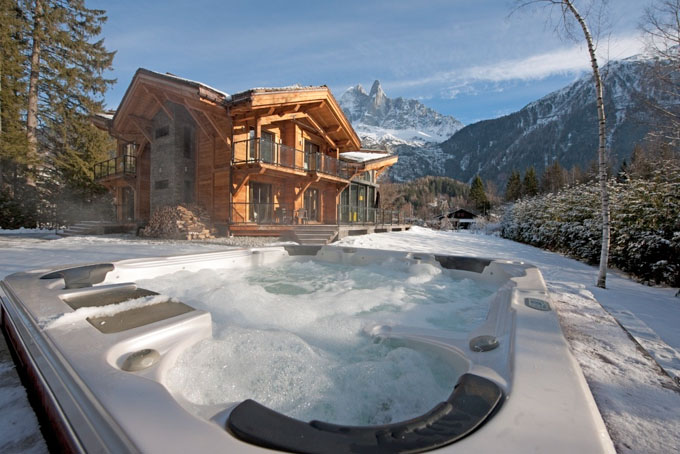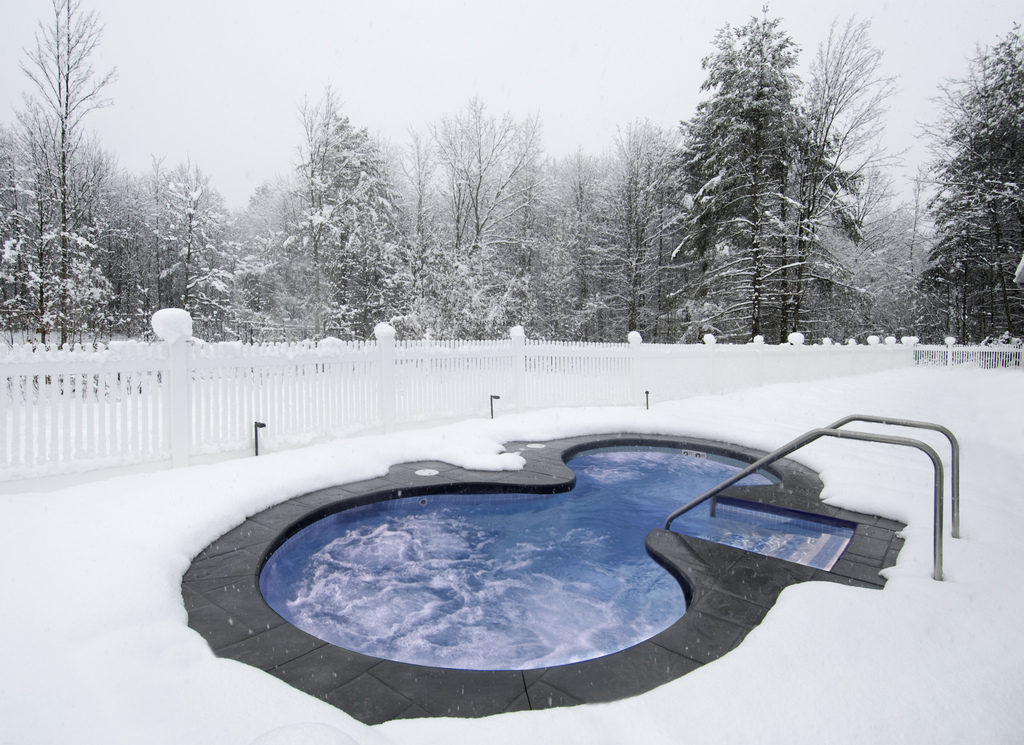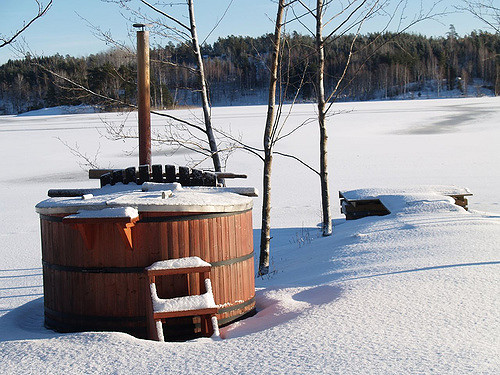
Winter Hot Tub Tips
When it’s cold outside, when the days start getting shorter and when there’s snow on the ground, there’s no reason at all to not keep your hot tub or spa in service. All the benefits associated with hot tubs only get magnified when there’s a big difference between the water temps and the reading on the window thermometer. There’s just no better way to beat the winter doldrums than to take a nice soak in a properly maintained hot tub. Here are some basic tips to keep your hot tub in peak working order while there may be snow on the ground.
Typically, most hot tub users drain, clean and optimized their equipment before really inclement weather hits. Be sure to do a good job flushing the system to remove build-up in the jet nozzles and other accumulation areas. You’ll want to do this again after the winter season ends, around mid March or early April.
I like to go over all the connections as well for the pump, heater and circulation lines to make sure there are no cracks or leaks. If you do find any, do not simply add some sealant to patch things up, instead replace the defective parts with new ones. This is also a good time to stock up on supplies like an extra filter cartridge, chemicals, and water test strips.
When winter does finally hit, make sure to treat your cover with a spray of a protectant like ArmorAll, and keep the cover shoveled off whenever there’s any snow buildup. Also, to prevent the water in the pipes from freezing up, program your heat timer to cycle on, especially at night. Set it to cycle on 20 to 30 minutes once per hour during extremely cold temps. Check with your hot tub dealer and keep the water temperature between 98 and 105 degrees F. If however, you haven’t kept an eye on it and your hot tub does freeze, drain it completely so you can see if there is any damage to the pipes, fittings and heater.

Keeping Energy costs down
Sure, keeping your hot tub or spa on during the winter will add to the electric bill, but there are some things you can do to minimize the pain. You would want to keep your cover in good condition, and if you don’t already have one, get an insulated cover made for outdoor use. You can also get an inexpensive foam insulation blanket that floats on the water. They come in various sizes so get one that fits your hot tub precisely. The combination of an insulated cover and a thermal blanket with help keep the heat in, reducing evaporation and the amount of chemicals you use to rebalance your water’s chemistry. Also, be sure to turn off the air jets and leave any air control valves off. These can draw in outside air and will only inject the cold air into the water which will increase energy demand. Also keep an eye on your water levels. Low water levels can cause the circulator and heater to stop working which then can lead to freezing.
Furthermore, the best way to keep operating costs down is to keep the water temps consistent, (between 98 and 105 degrees F.) on a daily basis. This way you don’t have to regularly bring the water back up to temps. The colder it is the longer it takes to heat the water.
Exterior Details
Depending on the type and style of hot tub you have, there are other measures you can take to maximize efficiency. If your hot tub is out in the open, consider adding some wind blocks like fencing or temporary wind block panels. Reducing the wind-chill factor will help your hot tub stay within normal operating parameters. Also, with a wide hot tub cabinet or enclosure, there is some airspace between the fiberglass inner shell and the outer wood paneling. You can easily add some insulation to this, either foam board or fiberglass mat material, or a combination of both. Just make sure not to get anything in contact with the heating element parts. These need to be clear of any obstacles. If you have a portable Hot Tub on the back porch, be sure to keep an eye on it as melting snow and icicles from the roof can drip on the cover. Also, you can add some insulation board under the portable hot tub. The floor under portable units is seldom insulated and this will help prevent heat loss.
Make sure to regularly inspect the condition of your unit’s cabinet. Just like your house, any cracks or open voids will allow heat to escape.

What if your Hot Tub Freezes?
By keeping an eye on your unit, you minimize the chances of a hard freeze. But if this does happen, use hot water to raise the water temperature more quickly for a faster thaw. And, as we mentioned before, if your hot tub does freeze, drain it completely, closely examine it for any damage or leaks and then make repairs. Once that’s done, fill it back up and bring it up to operating temperatures.
During a bad blizzard, if you experience a power failure don’t worry right away. With a properly insulated hot tub with an insulation blanket in use, it will take roughly a day and a half of 28 degree F. temps for your unit to start freezing. If you have a household generator, consider running an extension cord to a small submersible pump, to circulate the water. This will help prevent the water from freezing. You can also power a small space heater with a generator and put it in the heater/pump compartment to run periodically.
Continued Benefits
And let’s not forget the health benefits! Physical wellness is a very big part of hot tub use. And there are three basic ways we enjoy them: the heat increases your circulation by dilating your blood vessels, the buoyancy of being immersed in the water relieves joint stresses by reducing your weight by 90%, and the powerful water jets help soothe away muscle tension with massage. These elements all work together to provide a variety of benefits including a mental pick-me-up, during a time when most of us are holed-up in the house. Finally, consider using the hot tub on the coldest winter days. Taking a nice hot soak will keep you warmer so you don’t have to turn up the thermostats in your home. So I ask you, why not use and enjoy your hot tub in the winter?



